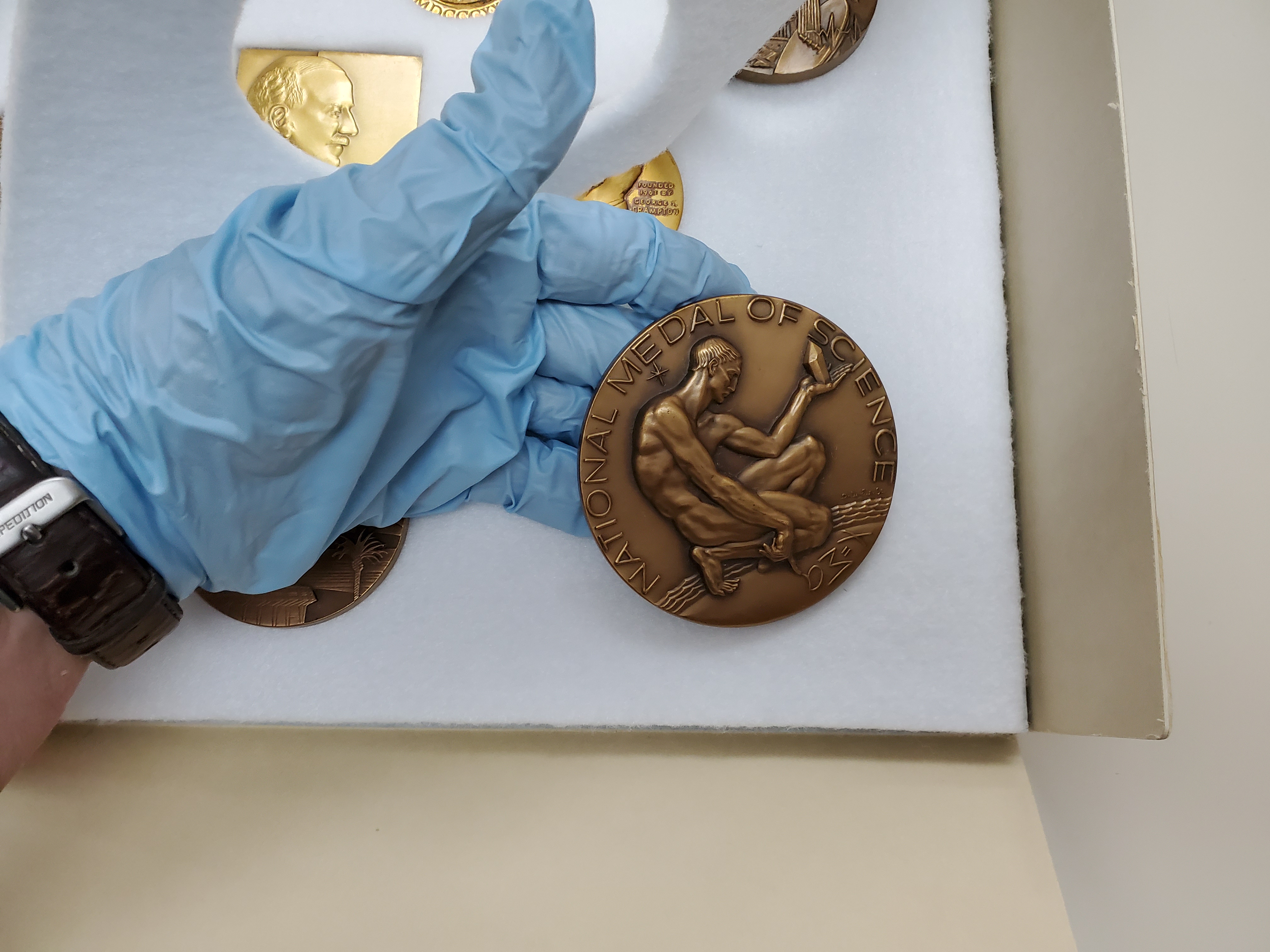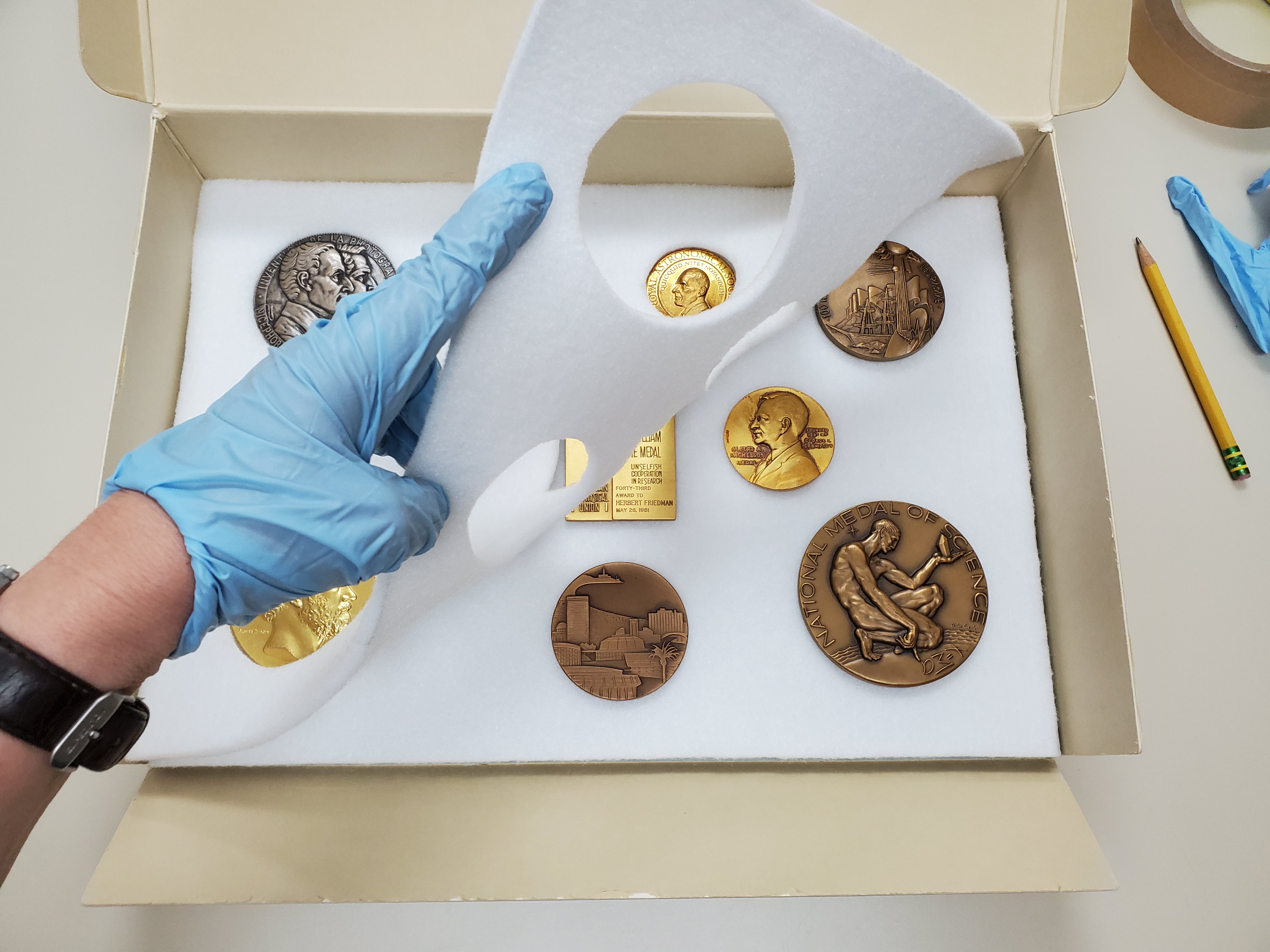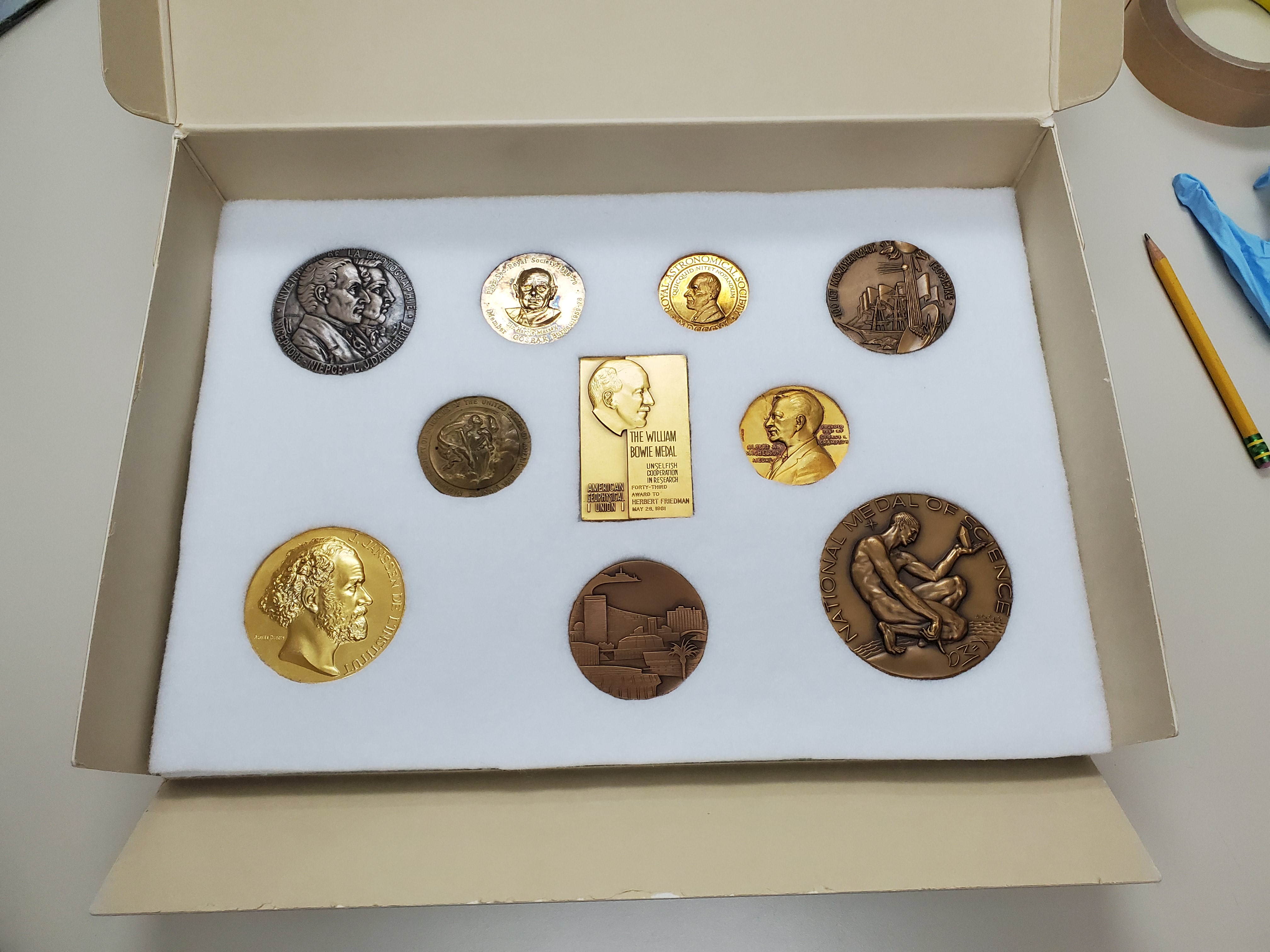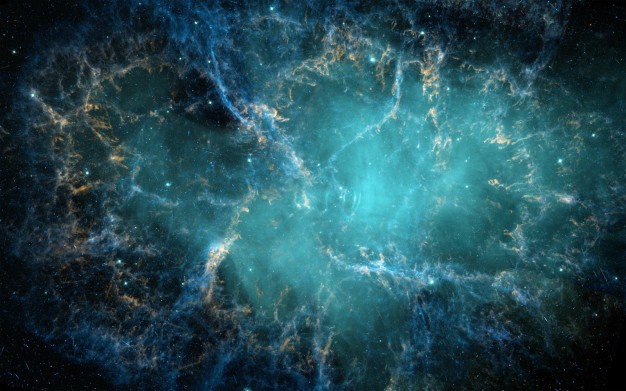Herbert Friedman, Astrophysicist
It is impossible for any sensitive person to look at a star-filled sky without being stirred by thoughts of creation and eternity. The mystery of the origin and destiny of the universe haunts us throughout our lives. – Herbert Friedman
Photo courtesy of Earth Blog.
Sometime last year, David Gary, Associate Director of Collections here at the APS, presented me with the challenge of creating an appropriate way to store 15 medals awarded to Herbert Friedman, a noted astrophysicist, rocket astronomist, and APS Member (elected in 1964). Aerospace, physics, and rocketry are hot topics in my household, so naturally I was thrilled to be working on a portion of Dr. Friedman’s achievements, which are mind-boggling in their breadth and depth.
The many aspects of Herbert Friedman’s passions are seemingly endless, so I will present just a surface skim of his work—a brief list of his innovations conducted during his career with the Naval Research Laboratory (NRL), provides a glimpse of his accomplishments:
- Helped establish the field of rocket astronomy in the late 1940s
- Helped pioneer X-ray astronomy, and first observed X-rays from the Crab Nebula (the remains of a supernova explosion)
- Developed the field of solar physics
- Flew the first solar satellite, SOLRAD, which serves as a model for the instruments in use by the National Oceanic and Atmospheric Administration today
Friedman began his career at NRL in 1940 with an early interest in X-ray analysis. He later entered into the study of space using sounding rockets, which carried instruments to measure and observe solar radiation. In one experiment, Friedman released a series of small sounding rockets called “rockoons,” which were lifted by balloons before ignition, to record data from a solar flare. He ended his lab work in 1980 as Emeritus Chief Scientist of the NRL’s E. O. Hulburt Center for Space Research. He ultimately held 50 patents for his inventions and wrote five books over the course of his life.
The 15 medals held as a part of the Herbert Friedman Papers includes the National Medal of Science pictured below.

He was awarded this medal in 1968 by Lyndon Johnson "for pioneering work in rocket and satellite astronomy and in particular for his contributions to the field of X-ray astronomy" (National Science Foundation). Additional key contributions toward his receiving this honor were the development of a branch of astrophysics called solar physics, and the use of sounding rockets to perform tests in space.
With this undeniably awesome responsibility in my hands, I began to think of how to apply my conservation skills in a manner that benefitted the subject. You may be wondering why I’m referring to a storage enclosure in relation to conservation. Isn’t conservation about fixing things?
Actually, sometimes the best form of conservation is not necessarily repairing damage, but rather preventing harm in the first place. This subspecialty within my field is known as “preventive conservation.” Preventive conservation is the foundation of a good collection care program and includes a range of actions that include maintaining quality environmental conditions for the collections in general, ensuring that items are properly cared for during transport and exhibition, and creating an emergency preparedness plan and response.
The term “preventive conservation” was first used in the early 1970s, but the basic concept of preventing the deterioration of cultural materials has always existed (Lambert, 2014). It has also been pointed out that until the early 1990s, conservation as a profession devoted itself almost solely to the care of individual objects. Since that time, it has been increasingly seen that greater focus is needed on larger scale care that will benefit the major portions of our heritage, instead of the few (Levin, 1992).
Good storage, which I aimed to create for Dr. Friedman’s medals, is another foundation of effective preventive care, as it advances the principles of conservation while promoting accessibility and use. This is especially important at an institution like ours where we have extensive use of materials by researchers.

For these medals, I ultimately came up with a solution that I felt was functional, elegant, and would provide superior protection whether they were being transported, resting in storage, or actively looked at and handled.
Here, a standard archival clamshell box was retrofitted to accommodate 3 rigid trays made of archival corrugated board to support the hefty weight of the medals. I lined each of these trays with a thick layer of chemically inert polyester felt to protect the fragile surfaces of the medals. A significant aspect of the polyester felt is that it is non-reactive to all components of the medals – which include gold, bronze, other metals and alloys, enamel, adhesives, and ribbons made of polyester or silk.
The medals are held snugly in place with a second layer of felt that has cut-outs to easily fit over them on the felt-lined tray. The advantage to this layer is that it passively contains to prevent movement. A third felt layer rests over this system to protect the upper surfaces from abrasion of the tray that is placed on top.

When all three trays are inserted and the box is closed, the felt packing provides gentle pressure perpendicular to the medal faces to give extra insurance against movement within the box. Conservation grade nitrile gloves (gloves processed without chlorine) are enclosed with the medals to encourage proper handling, as some may tarnish if touched with bare hands.
In the end, it turns out that I have something in common with Herbert Friedman, other than the fact that both of us have touched these medals. He was once recalled by his wife Gertrude Friedman as saying (about his research in astronomy and astrophysics), “If I were rich, I would pay for the privilege of doing it”. Me? I kind of feel the same about being able to work on a project like this.
References
Lambert, Simon. 2014. The Early History of Preventive Conservation in Great Britain and the United States (1850–1950). Connaissances et reconnaissance du conservateur-restaurateur. 2014(9). [Accessed November 10, 2021]. Available at: https://journals.openedition.org/ceroart/3765.
Levin, Jeffrey. 1992. Preventive Conservation. The Getty Conservation Institute Newsletter. 7(1) Winter 1992. [Accessed November 10, 2021]. Available at: https://www.getty.edu/conservation/publications_resources/newsletters/7_1/preventive.html.
National Science Foundation. The President's National Medal of Science: Recipient Details. [Accessed November 12, 2021]. Available at: https://www.nsf.gov/od/nms/recip_details.jsp?recip_id=133


